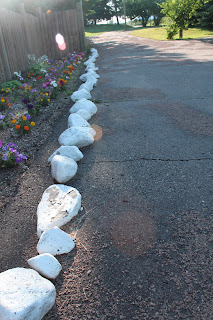One of the major responsibilities of a museum is to its object collections. About a year ago the Minnesota Discovery Center
embarked on a major wall-to-wall inventory of our objects with the help of the Minnesota Historical and Cultural grant. Although some inventory was conducted before, there were incomplete information in the documentation.
Documentation is the most important part of a museum's collection. Without it no one would know where an object came from, what it is, and where it is located.
Before you start your wall-to-wall inventory, there are some basic registration (the act of registering/documenting an object) that needs to be in place. We used this type of system: 1998.2.3.
1998 represents the year that the collection came in through our doors.
2 represents that this is the second collection that came in through our doors in 1998.
And
3 represents that third object in this collection that was recorded.
1998.2 is the accession number and 1998.2.3 is the object ID number. Each object will have its own ID number.
Here is the most simple way to conduct a wall-to-wall inventory.
Using a notebook or inventory sheet you should have this information recorded: Accession/Object ID, Description, Measurements, Home Location, Date Completed, and Completed by.
Click to see an example of our inventory sheet.
Notes:
The description should describe what the object is, color, distinguishing marks, maker's marks, text that appear on the object. If you walk back into the storage using these descriptions, you should be able to make a good judgement of which object it is. The more information you have on hand, the better it is for future research on this object. If you don't have this information, save the research for another day and another project. HINT: If you tag your objects with subjects in addition to the description, it will make it easier for you to find an objects for specific searches.
The Home Location is a permanent place where you will store your object. Different areas in your storage space should be lettered or numbered, each column and/or shelf should be numbered. If you were given a letter D.4.5, you should be able to find where the object is in your collection room. D could mean it is on the wall that is given the name D. 4 means it is the fourth column, and 5 means it is on the fifth shelf. Number your storage area in a way that would make sense for you to find the objects in your collection.
Digitally recording this information will be very helpful in locating objects quickly. We use
PastPerfect a museum software. It's at $870 today. Excel is simple and inexpensive alternative. Once you have the money to purchase software like PastPerfect, it can be quickly transferred into PastPerfect. A simple Google search under "museum database software" will bring up a lot of websites and other software. Interview some other historical museums (such as the Minnesota Historical Society) to learn about what they use and why they use it.
Work from one end of the room to the other. This will be a painfully long process, but the outcome will be well worth it for decades.
This is from our collection storage. Notice that we tag our objects? We include the object ID number. Notice also the documents with the objects? It helps to have these documents with the objects so that we can quickly identify what collection the object comes from. As we inventory, we also line our shelves with a polyethylene foam so that metal objects aren't touching our metal shelves and wrap sensitive objects in acid free tissue.
Here are more resources about registration, collections care, inventory, and documentation.
Running a Museum PDF - a practical handbook. Everything and anything you will need to know about how to run a museum. Includes information on care of collections, care of visitors, management, marketing, disaster preparedness, and illicit trafficking.
Connecting to Collections - Has online resources.
Re-Org: is a great resource for small museums like the ones here on the Range. It highlights storage reorganization, documentation, and offers case studies on collection care. It was created in order for "Preventive Conservation of Endangered Museum Collections in Developing Countries.”
National Park Service Museum Management Program - Thorough pdf resources on managing collections

































